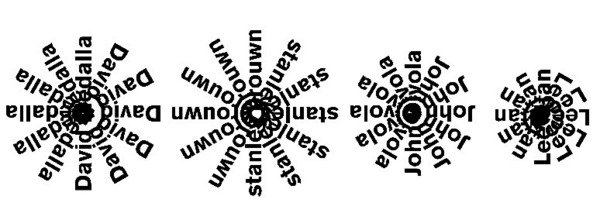Two exhibitions
dal 4/11/2015 al 8/1/2016
Segnalato da
4/11/2015
Two exhibitions
kurimanzutto, Mexico City
Unidades y Continuidades (Units and Continuities) surveys the language of experimentation that four artists began developing over 40 years ago. Isabel Nuno de Buen's presents large-scale sculptural installation scala, polis, taut, axis mundi.

David Medalla, stanley brouwn, John Divola and Lee Ufan
A project by Gabriel Kuri
Unidades y Continuidades (Units and Continuities) surveys the language of experimentation that four artists began developing over 40 years ago. The works on display at kurimanzutto are echoes of these early experiments, now crystallized into a variety of gestures and forms encompassing sculpture, photography, drawing and painting. Gabriel Kuri's curatorial project seeks to understand how geometry is unfolded in these various mediums and manifestations. To this end, he brings together the heterogeneous practices of David Medalla (b. 1942, Philippines), stanley brouwn (b. 1935, Suriname), John Divola (b. 1949, United States), and Lee Ufan (b. 1936, South Korea). Grouped together in the same exhibition for the first time, these artists exemplify a transnational and transgenerational spirit of searching.
Medalla, brouwn, Divola and Ufan developed a significant part of their artistic vocabularies during the late 1960s and early 1970s, at the same time Minimalism and Conceptual Art were consolidating into established movements. Their work is characterized by an economy of means as well as a rigorous consideration of the use of materials and their presentation. However, they sought to transcend the prevalent anxieties concerning authorship and dematerialization of the art object. Each of the four artists developed unique and systematic methods for delineating space or creating a pause in the flow of time, with the goal of better understanding the here and now. With this project, Kuri establishes a dialogue between four voices to reveal a series of convergences and contrasts between them.
In the early '60s, David Medalla began his experiments with kinetic sculptures that transformed materials such as sand, mud, and soap bubbles. His mechanic sculptures have been associated with hylozoism, a philosophical doctrine from Ancient Greece that argued that life is a basic property of all matter. The invisible forces that constitute the natural world are made tangible in his work.
stanley brouwn's singularly radical artistic language seeks to translate his location in space and time into different units of measurement. His pieces are stripped down to their essential components: simple records and administrative formats; words and minimal elements that refer to movement, scale, direction, dimension and space. In these works, the subject dissolves and becomes part of the geography; his biography is measured and quantified, merging with the surrounding context.
In LAX NAZ (1975), John Divola's photographs document the abuse of and forced entries into a series of abandoned houses, highlighting underlying social and economic factors. More than a photographer, you could say Divola is a photo-conceptualist: his work systematizes the traces of experience through the photographic lens.
For his part, Lee Ufan uses simple, timeless techniques such as sculpture or oil painting to study the relationship between material and perception. His work promotes an encounter with "the world as it is," a conception of reality responds to an idea articulated by the Japanese avant-garde movement Mono-ha. For example, with the simple gesture of a deliberate sequence of brushstrokes on a canvas, Ufan reveals a particular moment in the unfolding of space and time.
-------
scala, polis, taut, axis mundi (Constellation 1.2)
Chris Sharp invites Isabel Nuño de Buen to kurimanzutto
Berlin-based Mexican artist Isabel Nuño de Buen's large-scale sculptural installation scala, polis, taut, axis mundi (Constellation 1.2) (2015) is as rich and layered as it is sprawling. The artist deploys a variety of media and materials, including drawing, sculpture, plaster, papier maché, steel, welding, watercolor and paint, to create what resemble outsized maquettes of a decidedly maniacal and lyrical nature. Understanding architecture as the formal syntax of a given civilization, Nuño de Buen draws on a variety of interests, including German Expressionist architecture, urban planning, cultural anthropology, religion, and sculpture. Composed of modular fragments which can be reconfigured at will, her installations, like any given city itself, are never finished; they remain in a state of continual, albeit hypothetical evolution (she has been known to reuse elements from former pieces in new constellations). Much like a constellation, the finished work is a whole composed of particulars that are at once distinct from and constitutive of the whole. Provisional, mutable and rationally irrational, her installations privilege no specific point of view, presenting instead endless permutations and possibilities.
—Chris Sharp
Press contact: Jiulia Villasenor T +52 55 5256 2408 press@kurimanzutto.com
kurimanzutto
Gob. Rafael Rebollar 94 Col. San Miguel Chapultepec 11850 Mexico
Hours: Tuesday–Thursday 11am–6pm
Friday–Saturday 11am–4pm



